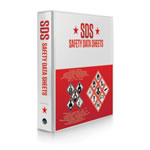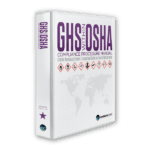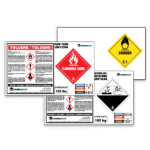A Deeper Dive into WHMIS
While we wait for the Occupational Safety and Health Administration (OSHA) to release the updated version of the hazard communication standard (HazCom 2012), let’s take a deeper dive into the changes that were published in Gazette II from Health Canada on January 4, 2023, for the Hazardous Products Regulations, better known as WHMIS.
Before we do, it is expected that OSHA will release their updated regulations anytime now…Stay tuned.
As we know, the WHMIS implementation will have a 3-year transition period. One would believe that the regulations become effective January 4, 2026, but in actuality, the transition date is not from the Gazette II posting, but from when Health Canada registered the regulation. That was December 15, 2022. That means the effective date for the new WHMIS is December 15, 2025.
According to Health Canada, at a recent public forum, the new HazCom regulations will only have a 2-year transition period.
Another big change to the WHMIS regulations is regarding the disclosure of ingredients on the Safety Data Sheets. WHMIS will require that all ingredients, even those hazardous ingredients that do not contribute to the classification must be disclosed. The Hazardous Products Regulations will be amended:
Amend item 3 of Schedule 1 of the Hazardous Products Regulations to specify that all hazardous ingredients which are present in a mixture at concentrations above the relevant cut-off levels must be disclosed, regardless of whether the hazardous ingredient contributes to the classification of the mixture as a hazardous product.
This means going back to the formulations to ensure that all hazardous ingredients are present.
Finally, the other major change is in Section 16(1)(2).
16 (1) Paragraph 5.12(2)(b) of the Regulations is replaced by the following:
- (b) a document that provides the changes to the safety data sheet that are required as a result of the significant new data and the date on which the significant new data became available.
(2) Paragraph 5.12(3)(b) of the Regulations is replaced by the following:
- (b) obtains or prepares a document that provides the changes to the safety data sheet that are required as a result of the significant new data and the date on which the significant new data became available and appends that document to the safety data sheet referred to in paragraph (a).
This means that you must record changes that were made to the document when updating. Noting the section that was updated in section 16 will not be enough if Health Canada is involved.
Per my previous blog, I suggested you start to review the products that are still active and will require new Safety Data Sheets. I strongly encourage you, in light of some of these other requirements, to start sooner than later to prepare.
Do you have any questions about how the WHMIS changes will affect your hazard communication system? Contact our team of Regulatory Experts, they can help you complete the process safely and efficiently.
Stay up to date and sign up for our newsletter!
We have all the products, services and training you need to ensure your staff is properly trained and informed.
 Safety Data Sheet (SDS) Services |
 OSHA / WHMIS GHS Training Courses |
 GHS Publications |
 Label Text Regulatory Services |







 ICC USA
ICC USA ICC Canada
ICC Canada